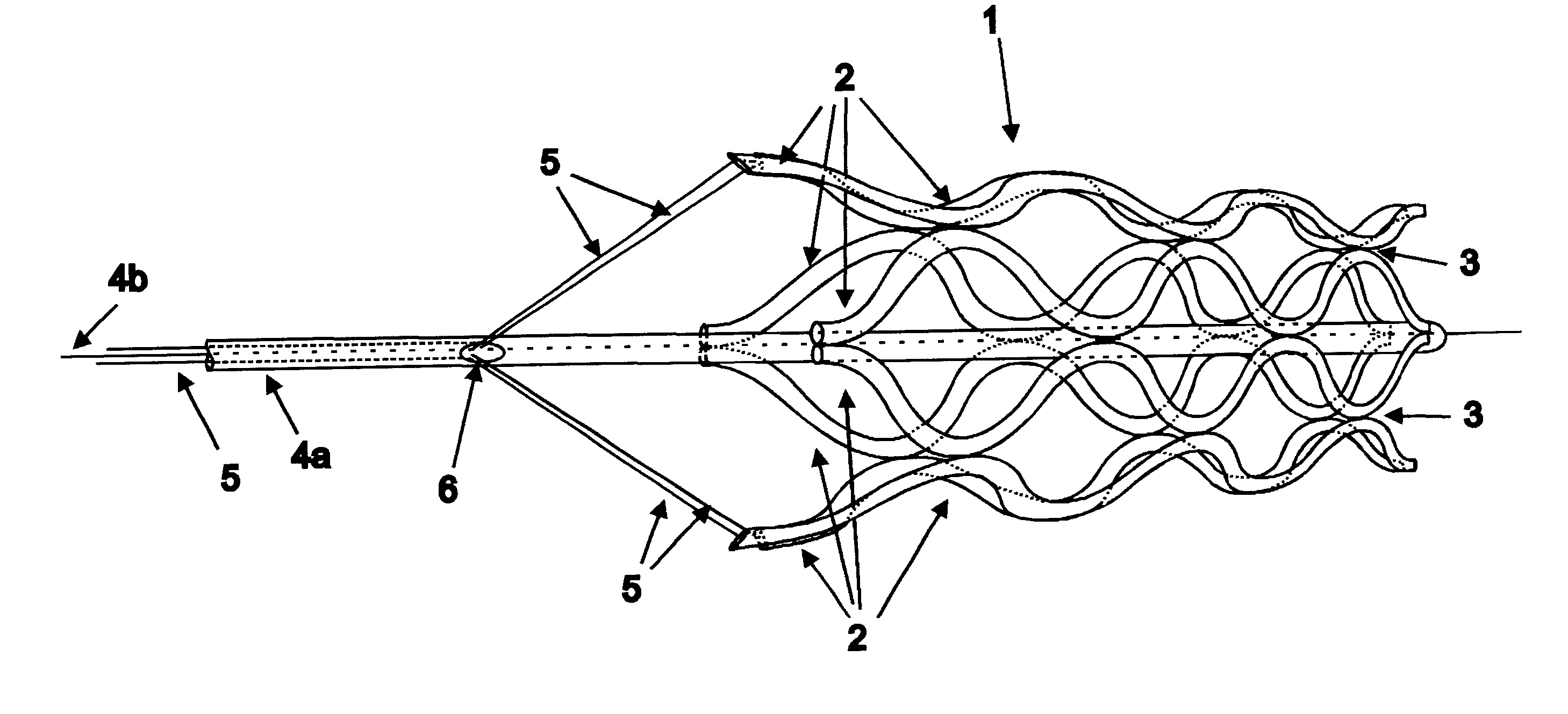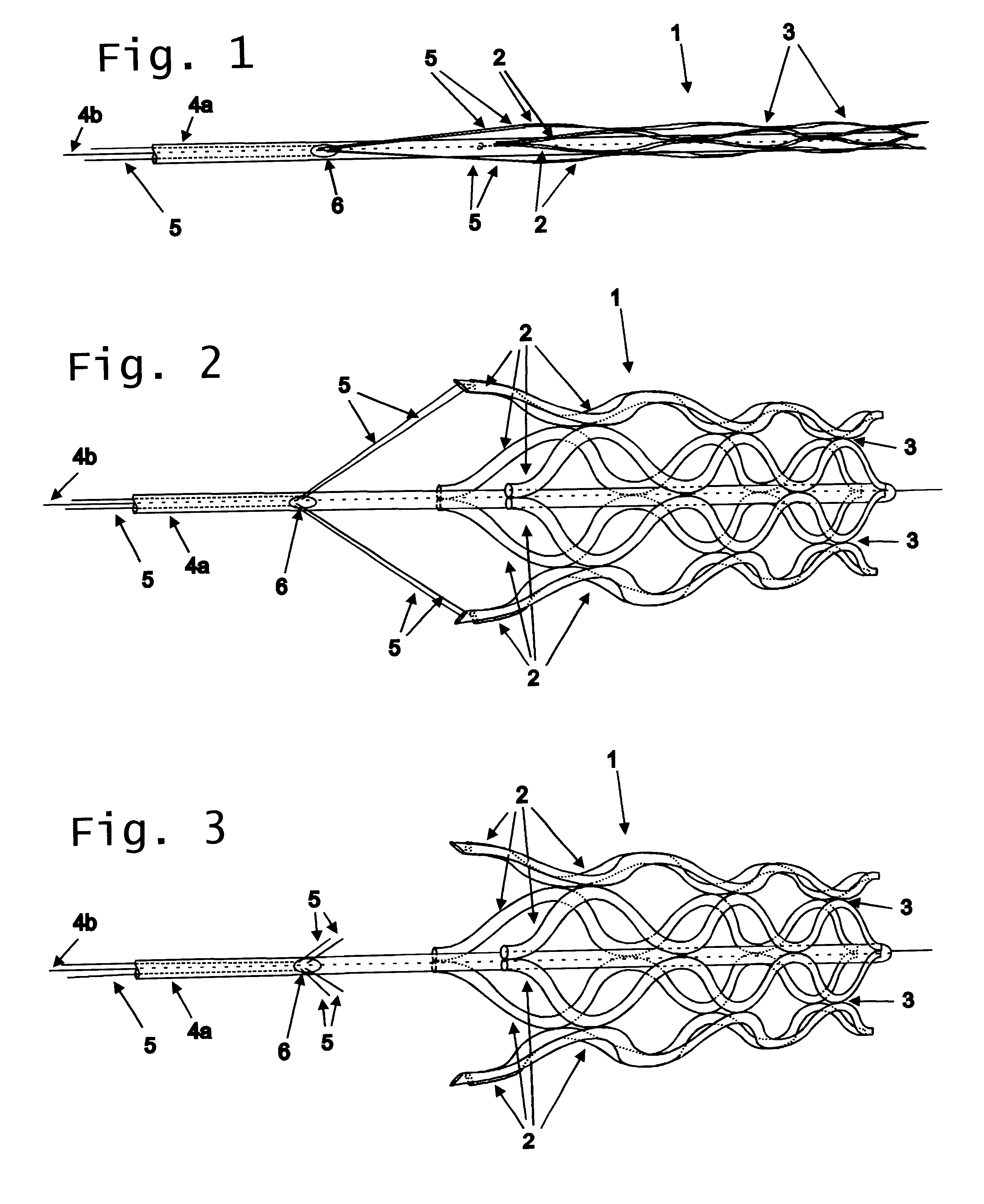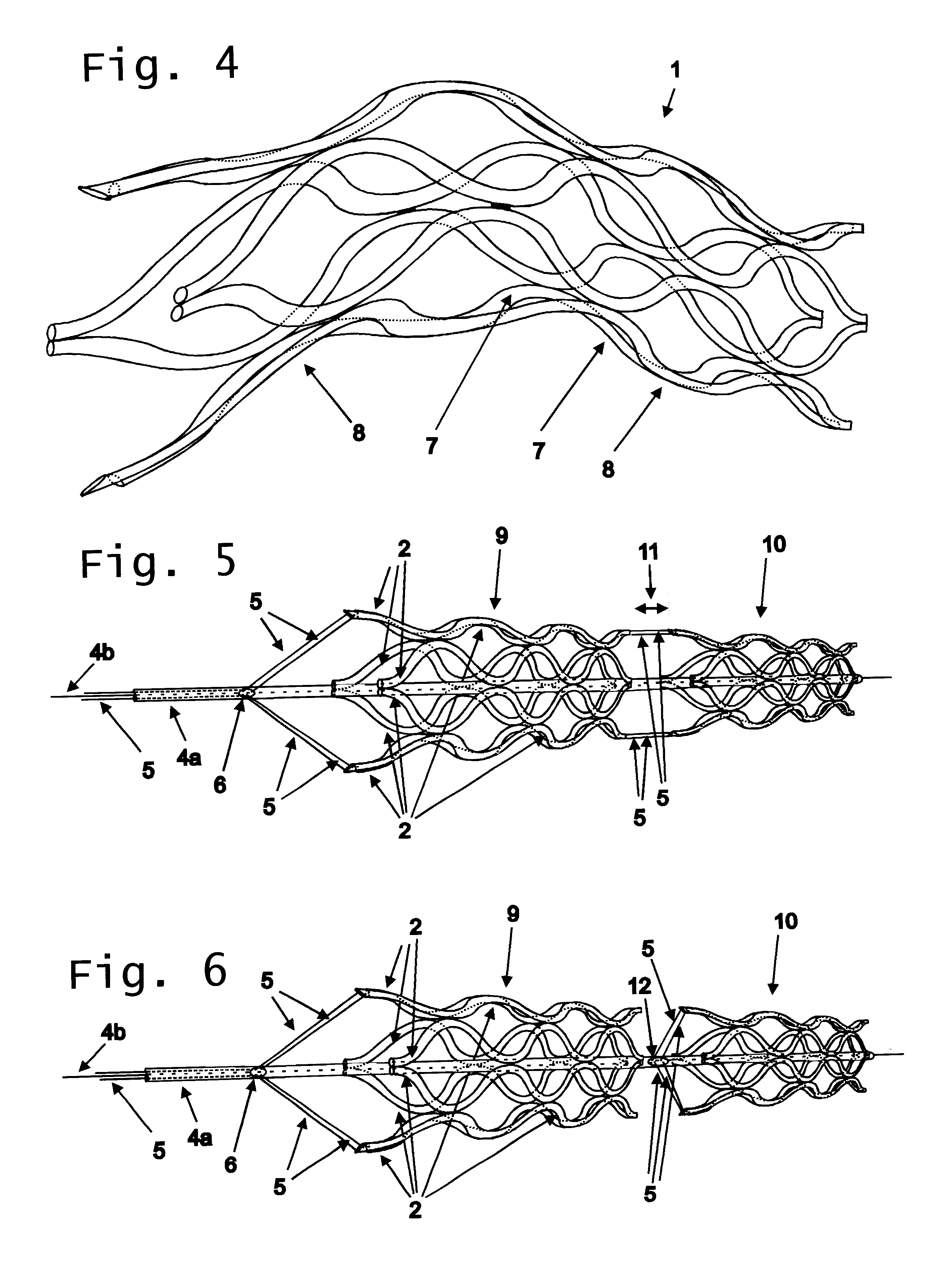Shape memory tubular stent
a memory tubular and stent technology, applied in the field of stent shape memory tubular stent, can solve the problems of inability to work, inability to clot, and placement of fibers or wires within the aneurysm to induce clotting, so as to prevent further enlargement and rupture, and reduce trauma
- Summary
- Abstract
- Description
- Claims
- Application Information
AI Technical Summary
Benefits of technology
Problems solved by technology
Method used
Image
Examples
Embodiment Construction
In its radially contracted state for introduction into the body lumen to be dilated or supported, the stent 1 is a webbed tubular structure or an outer contour as shown in FIG. 1. The eight tubes 2 are connected at nodal points 3 by welds or other connecting means. The stent is delivered into the body lumen at approximately the distal end of a delivery catheter 4 to which it is detachably attached. Although the preferred embodiment of the invention shown in FIG. 1 is comprised of eight tubes, any number of tubes could comprise the webbed tubular structure.
In the radially expanded shape as shown on FIG. 2 the tubes 2 have had their shapes recovered by the application of photo-thermal energy delivered by optical fibers 5.from a photo-thermal source coupled to the proximal end of the said optical fiber. The optical fibers that deliver the photo-thermal energy that initiate the shape recovery pass through the delivery catheter and exit it at orifices 6 of the said delivery catheter and ...
PUM
 Login to View More
Login to View More Abstract
Description
Claims
Application Information
 Login to View More
Login to View More - R&D
- Intellectual Property
- Life Sciences
- Materials
- Tech Scout
- Unparalleled Data Quality
- Higher Quality Content
- 60% Fewer Hallucinations
Browse by: Latest US Patents, China's latest patents, Technical Efficacy Thesaurus, Application Domain, Technology Topic, Popular Technical Reports.
© 2025 PatSnap. All rights reserved.Legal|Privacy policy|Modern Slavery Act Transparency Statement|Sitemap|About US| Contact US: help@patsnap.com



